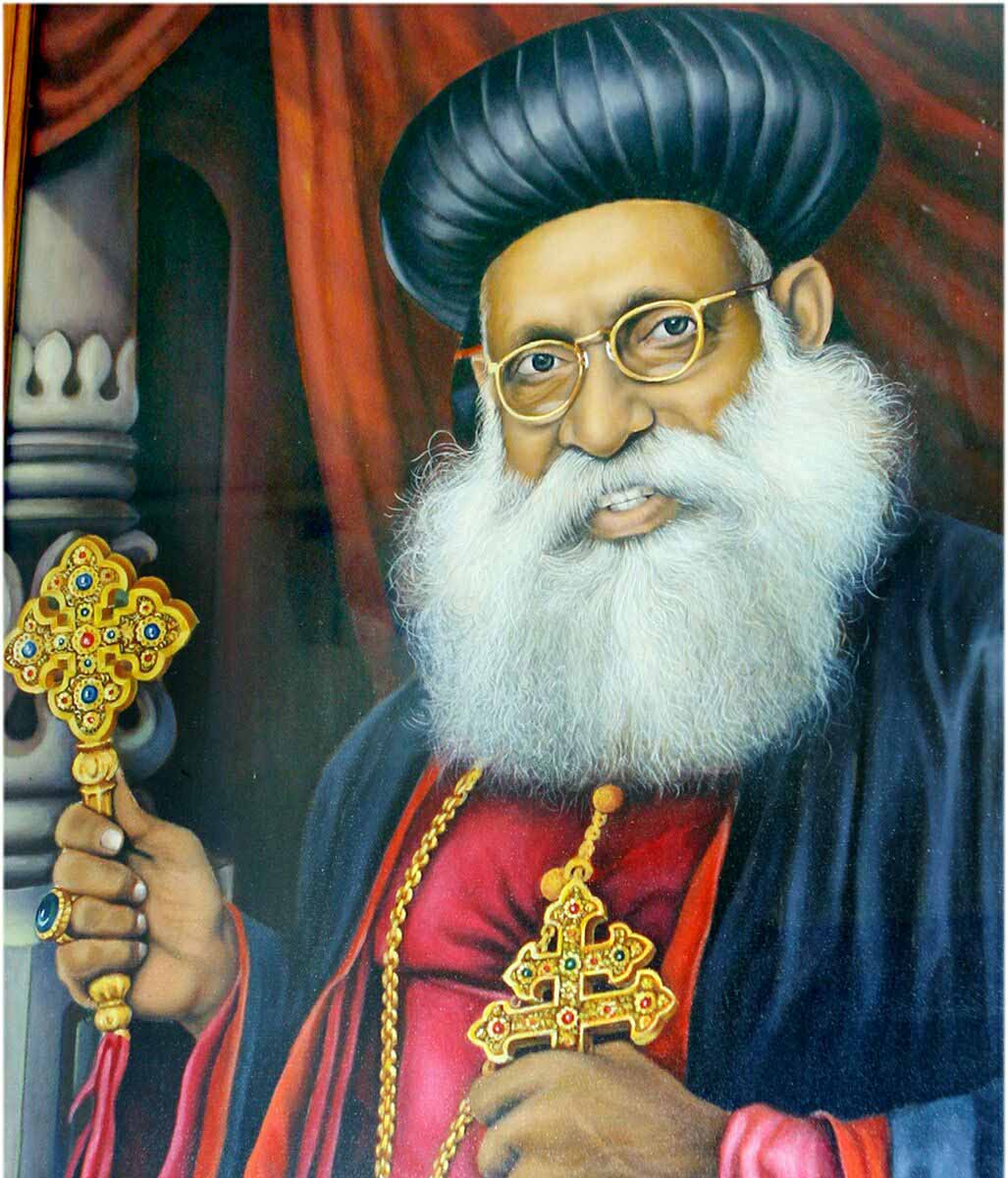
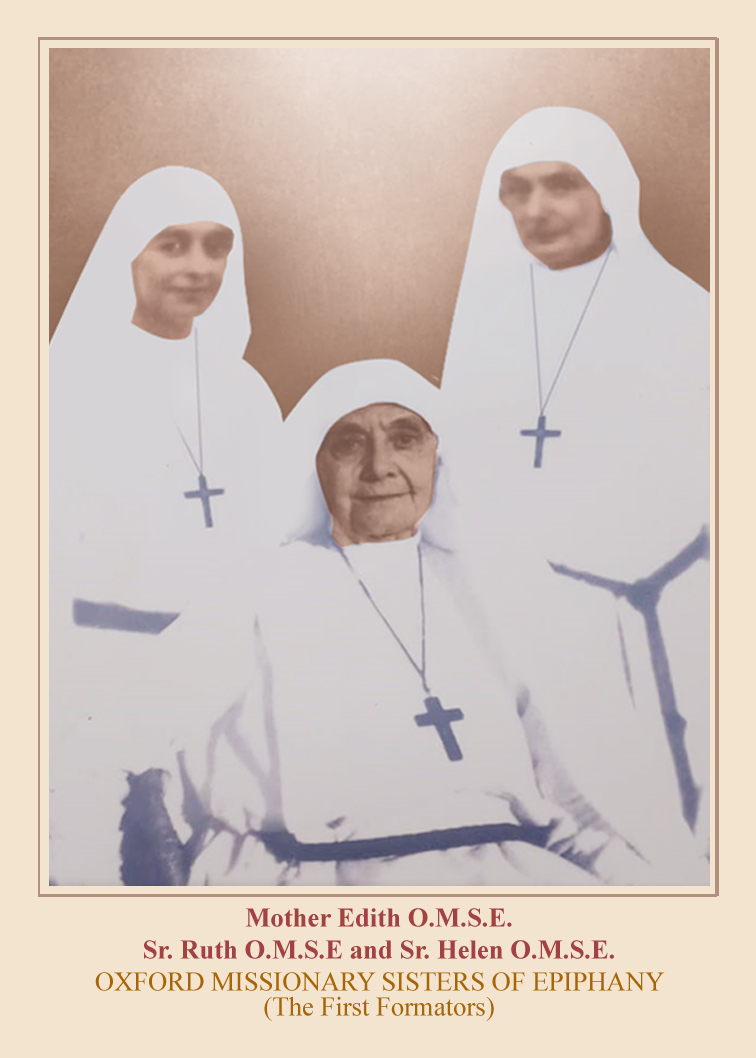
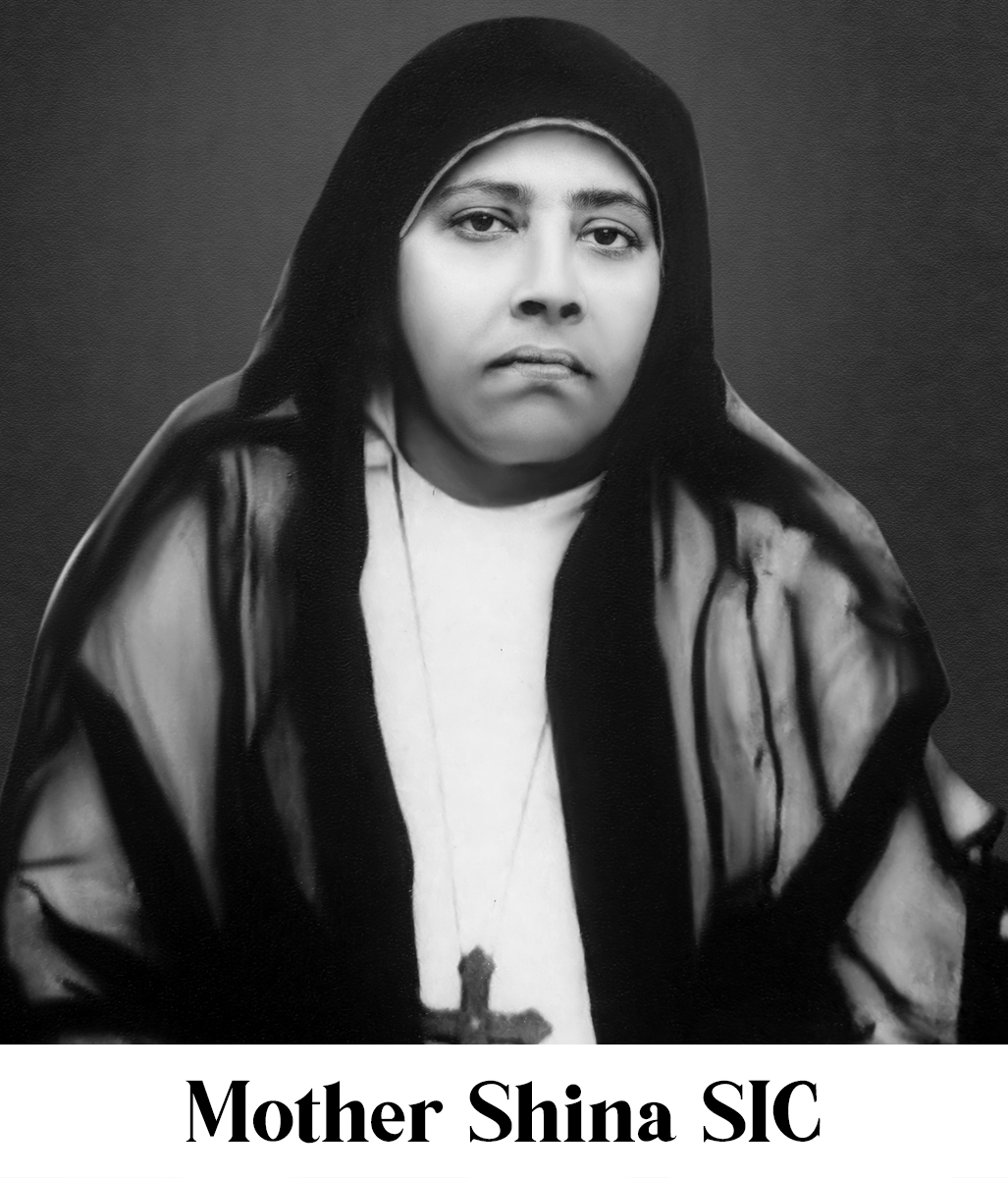
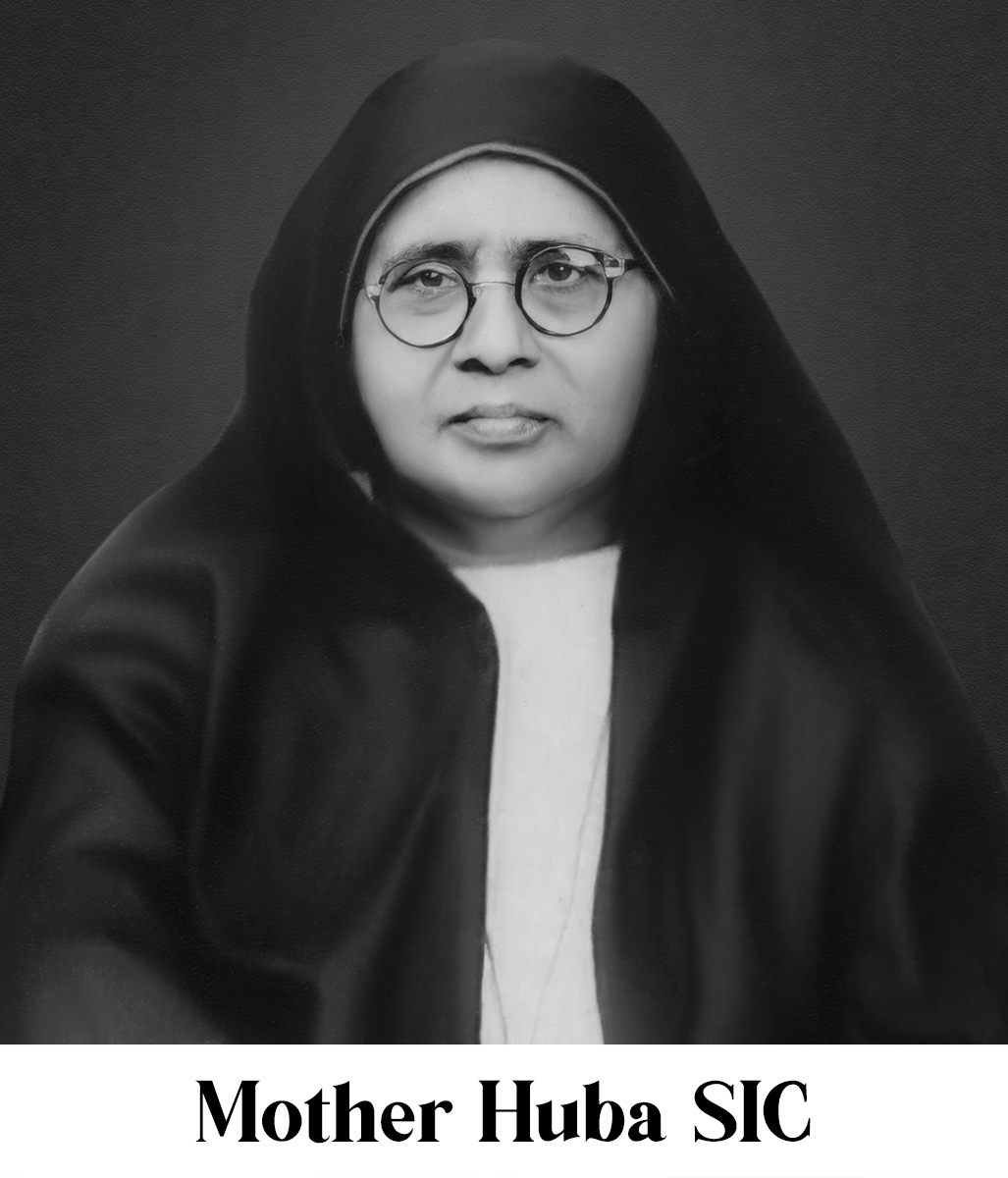
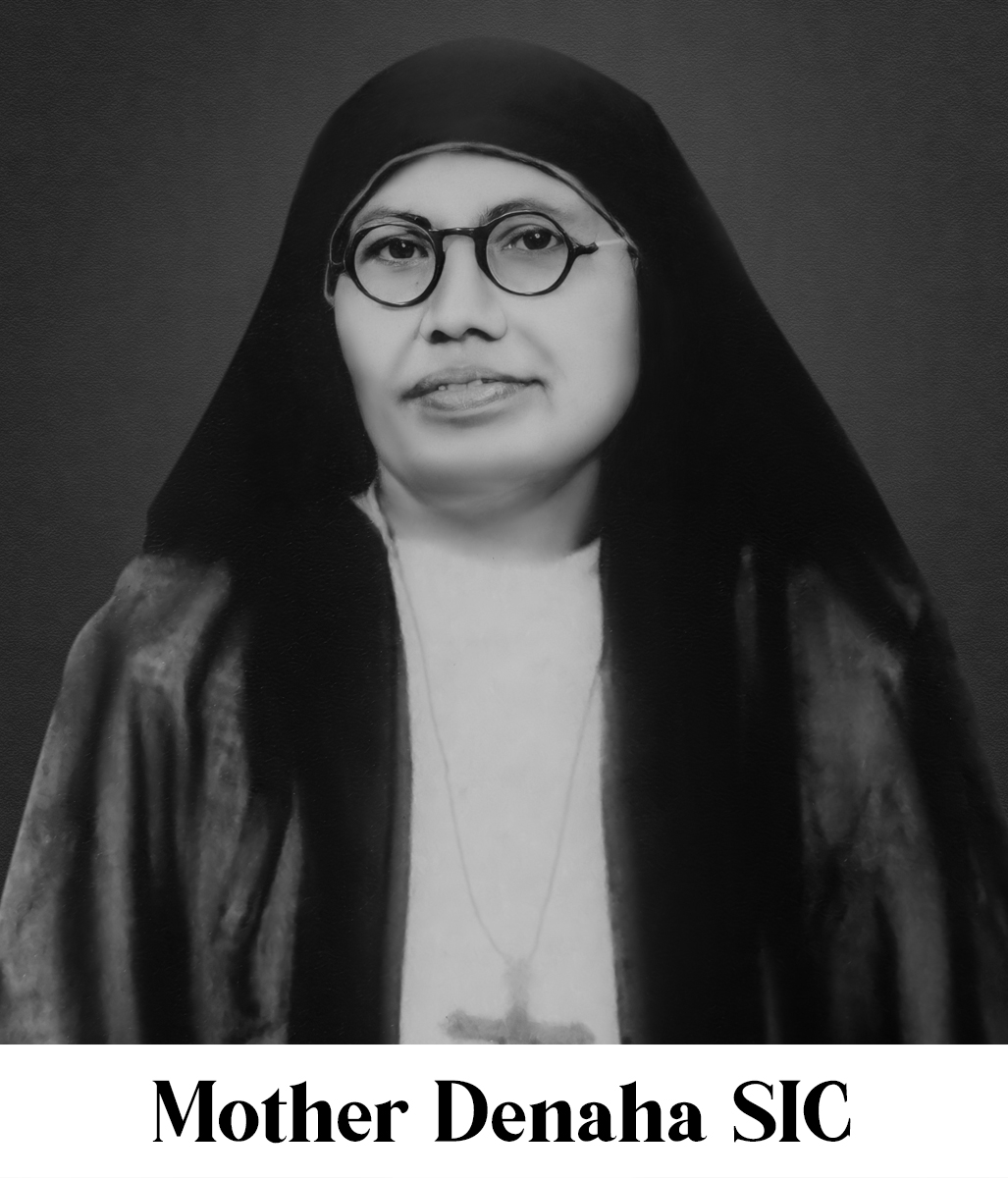

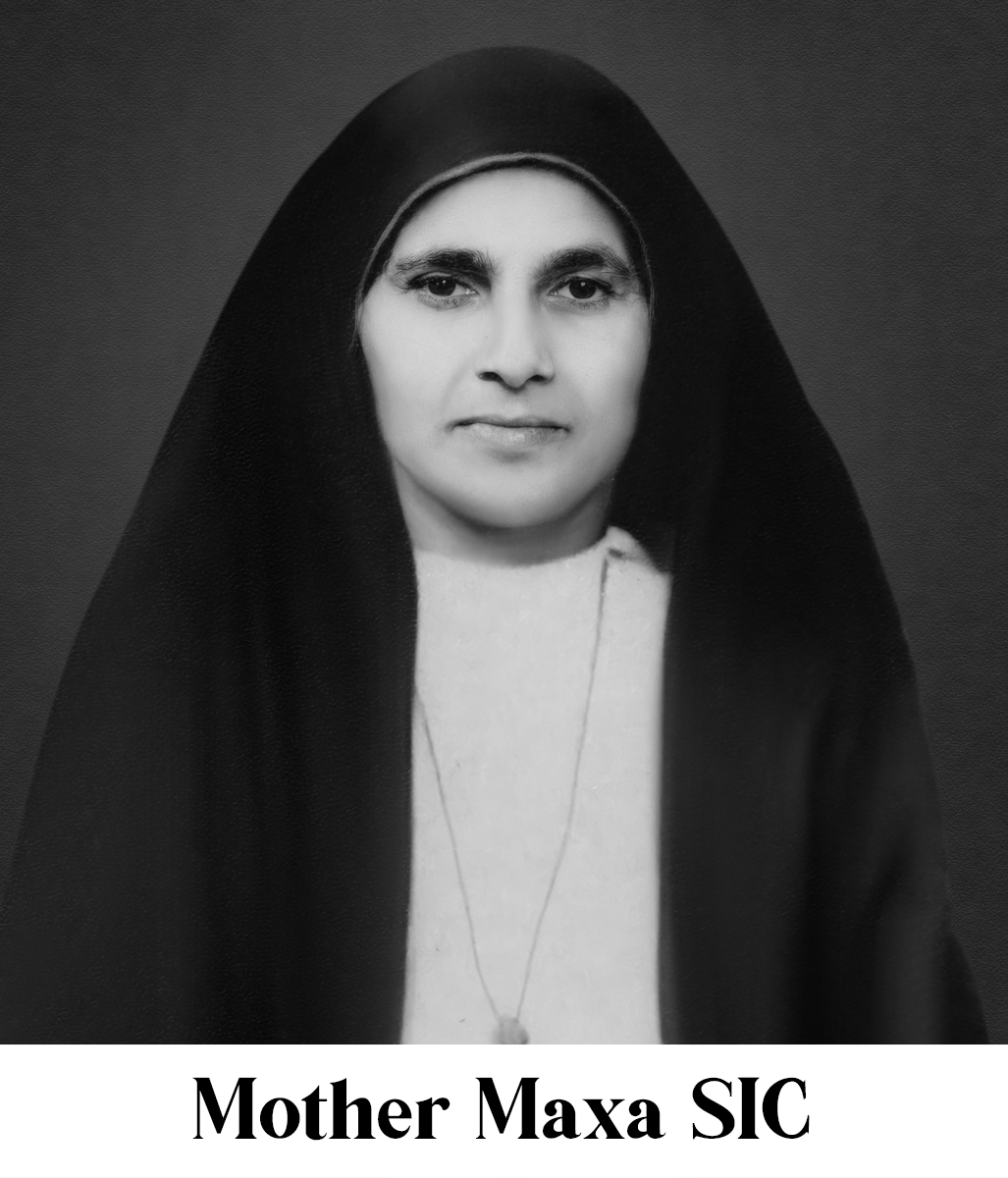
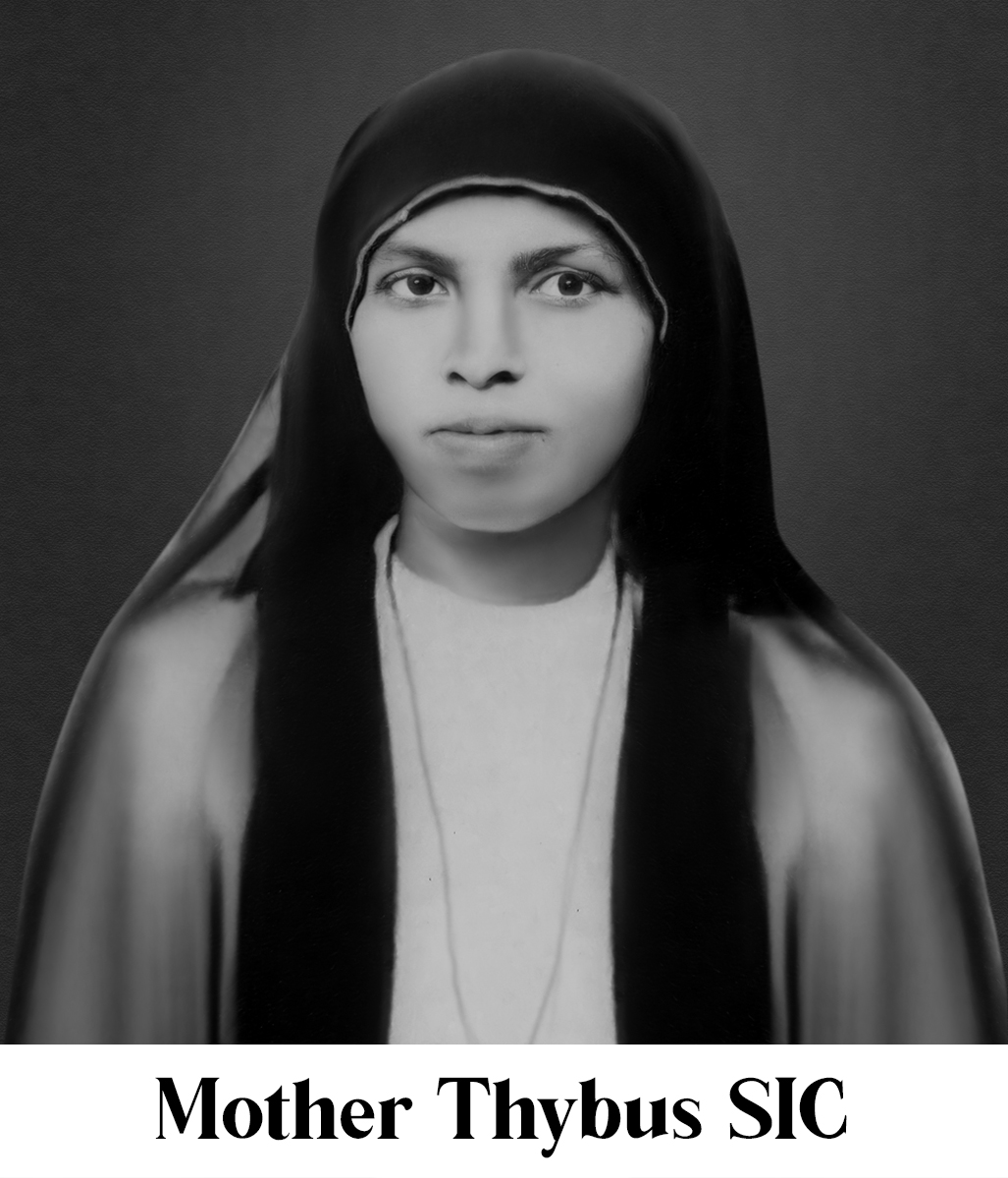

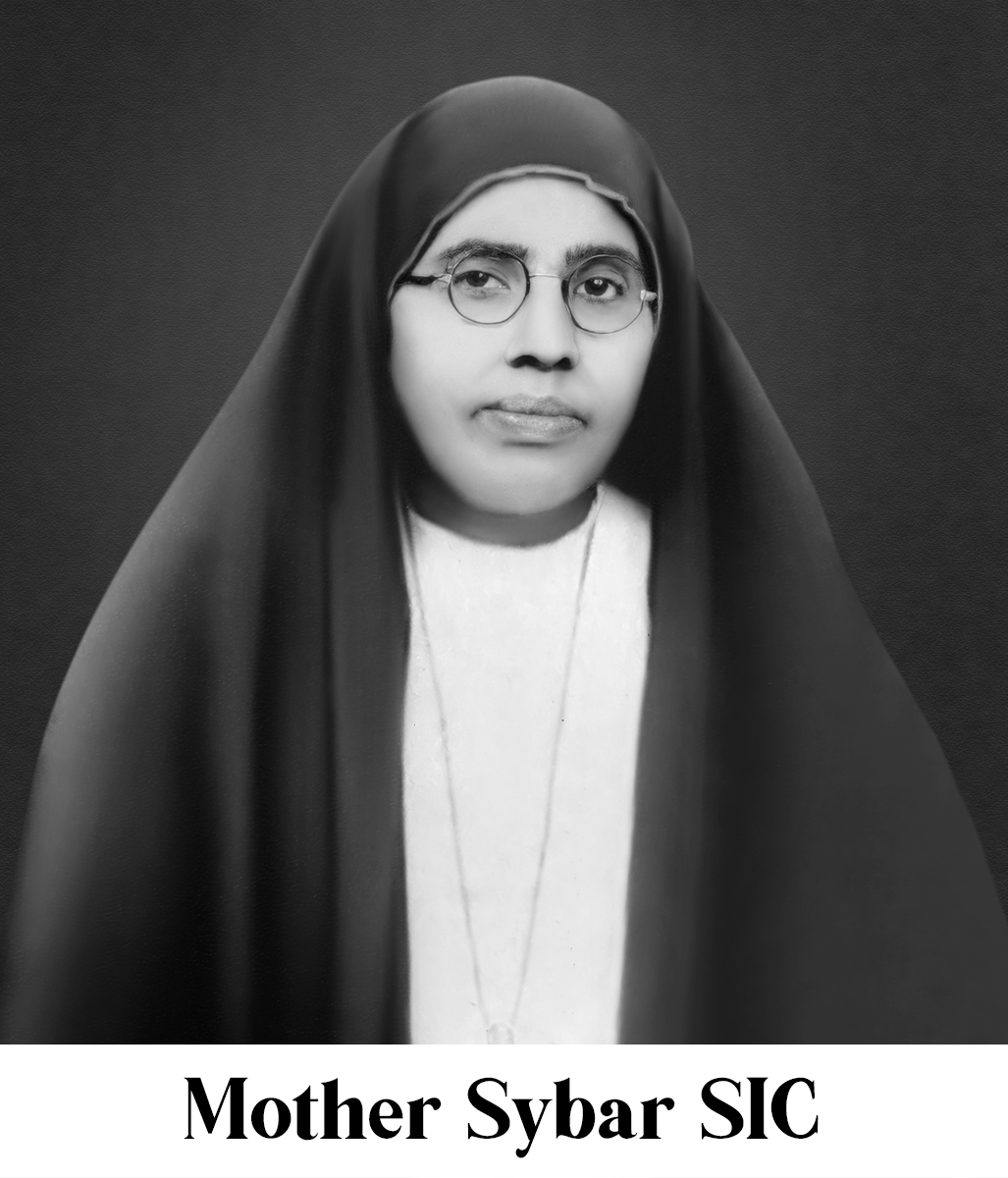
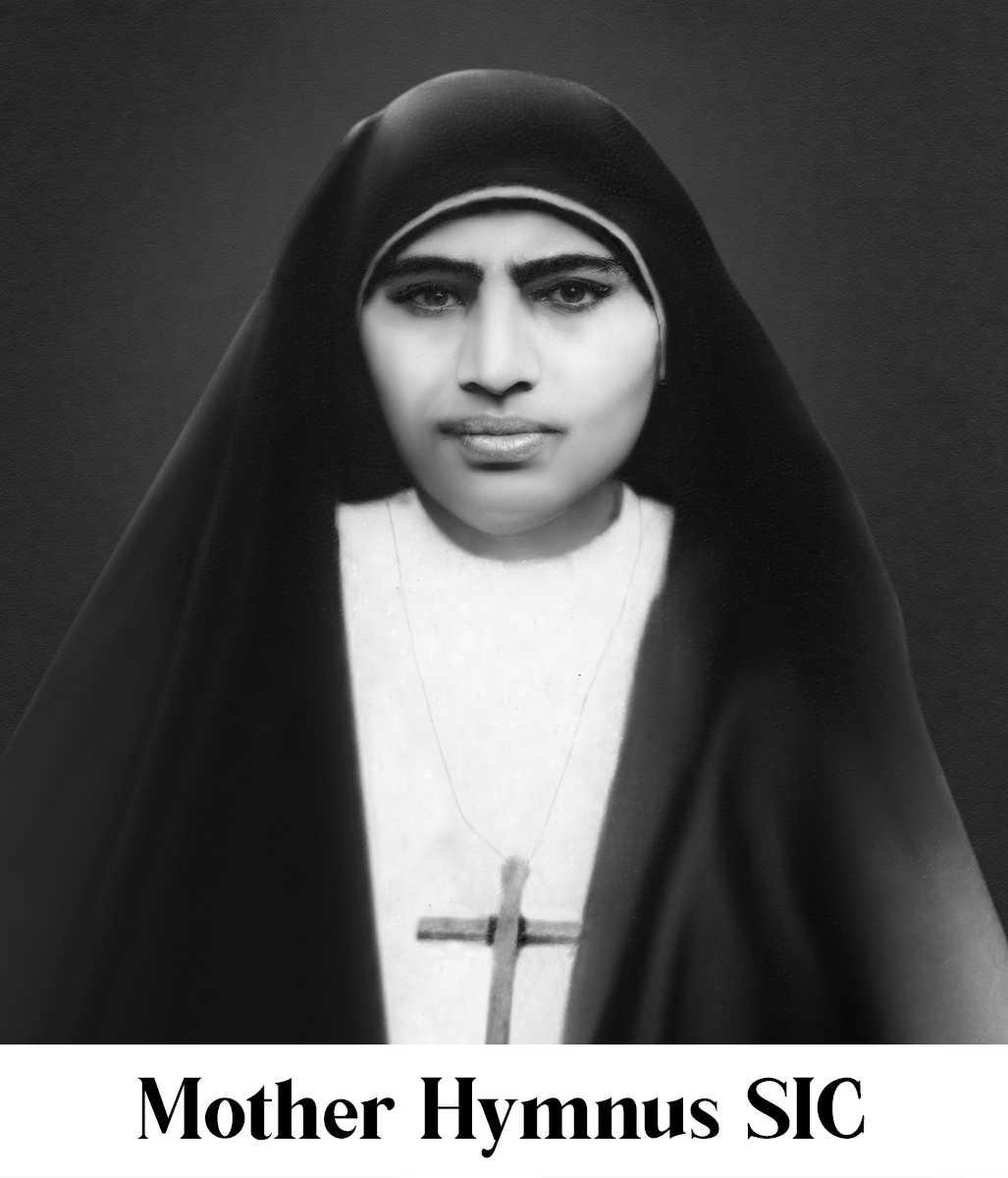
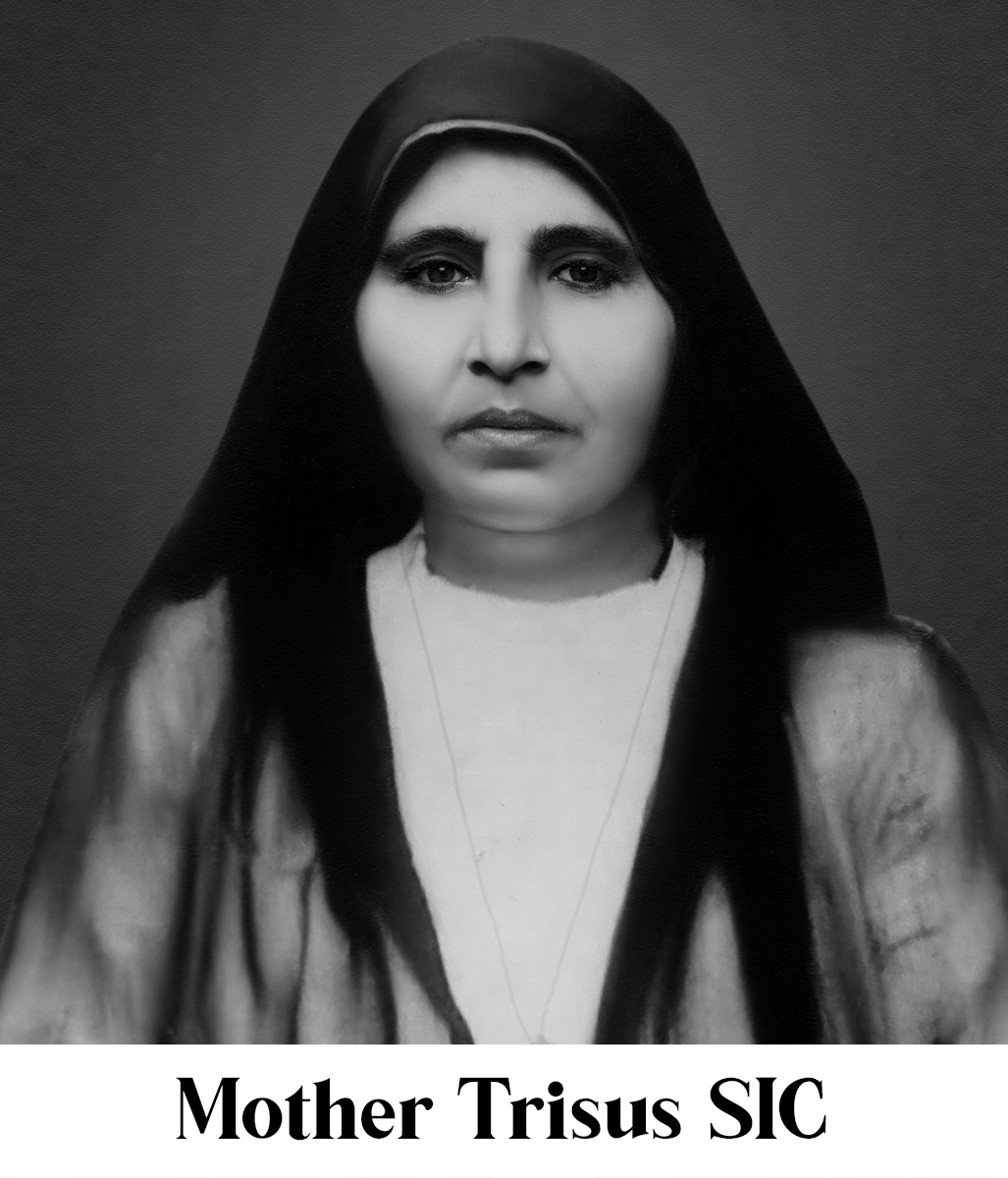
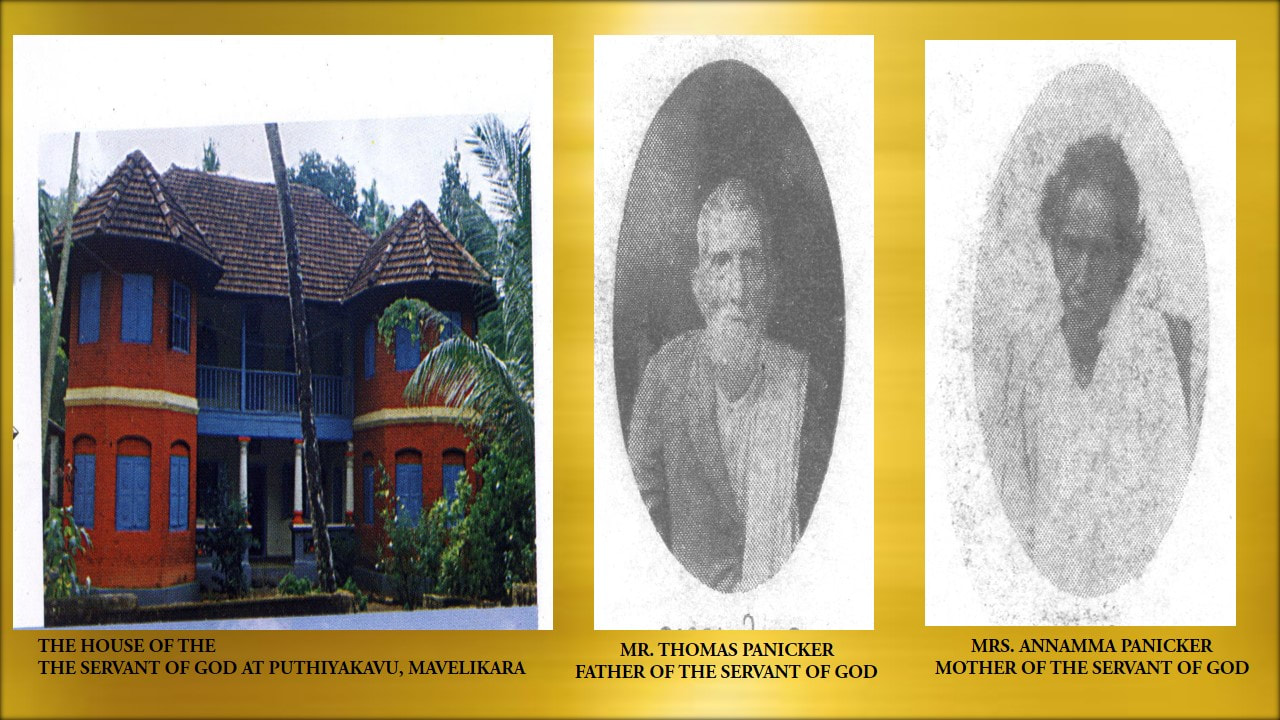


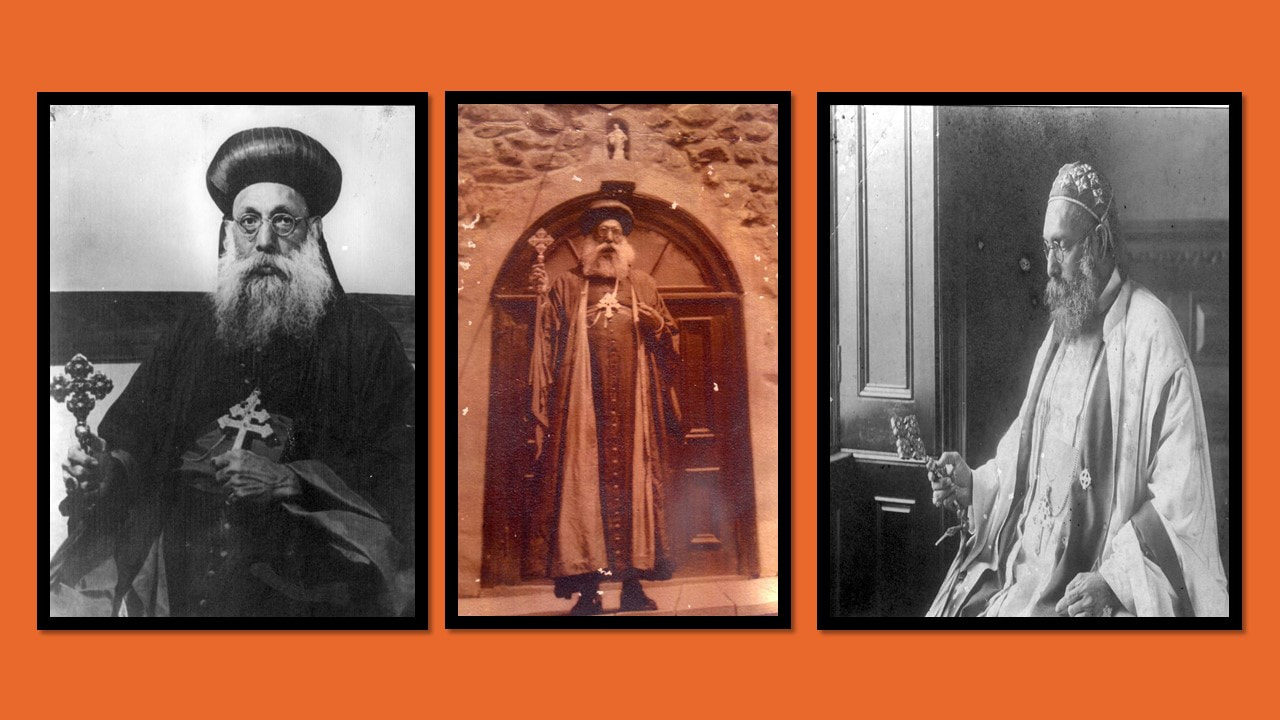
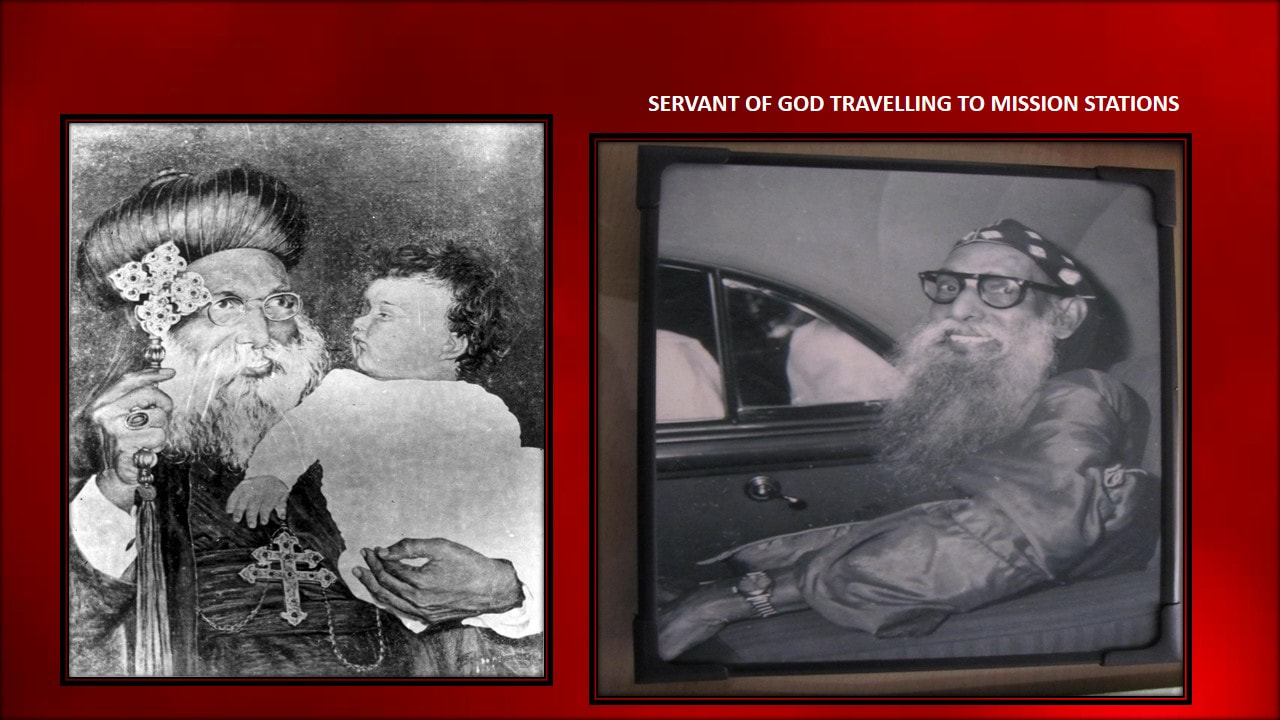
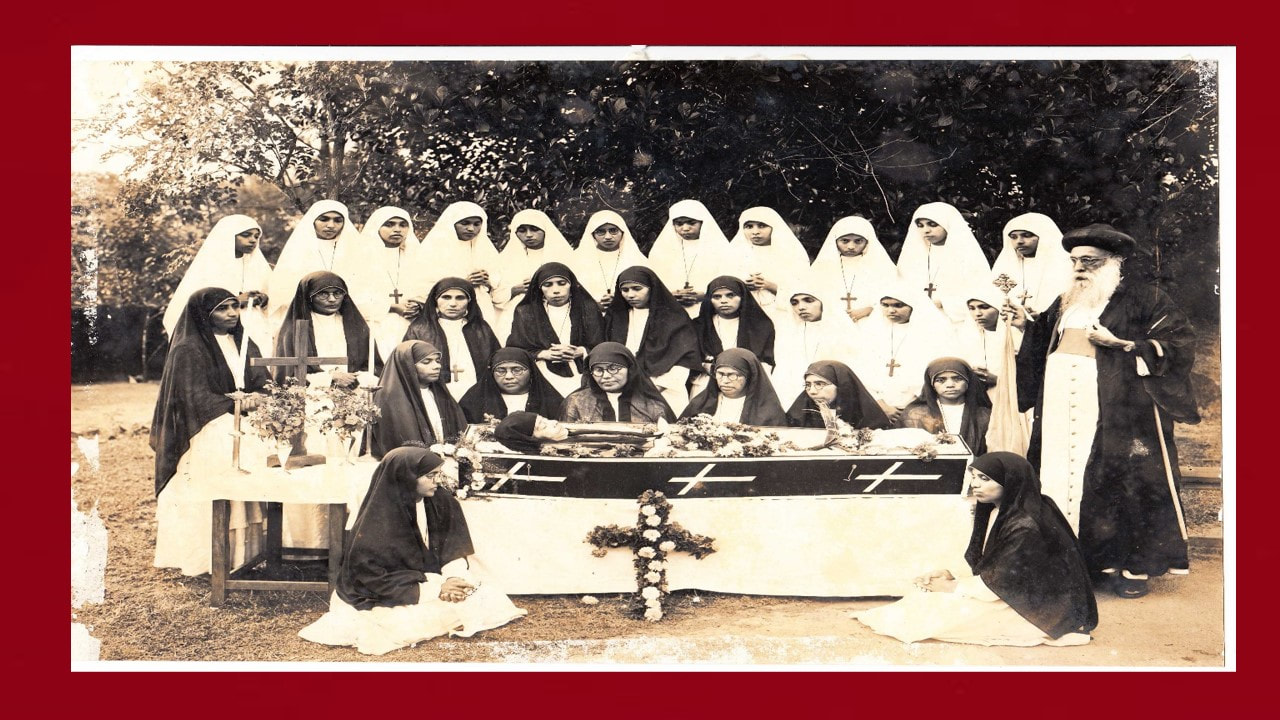
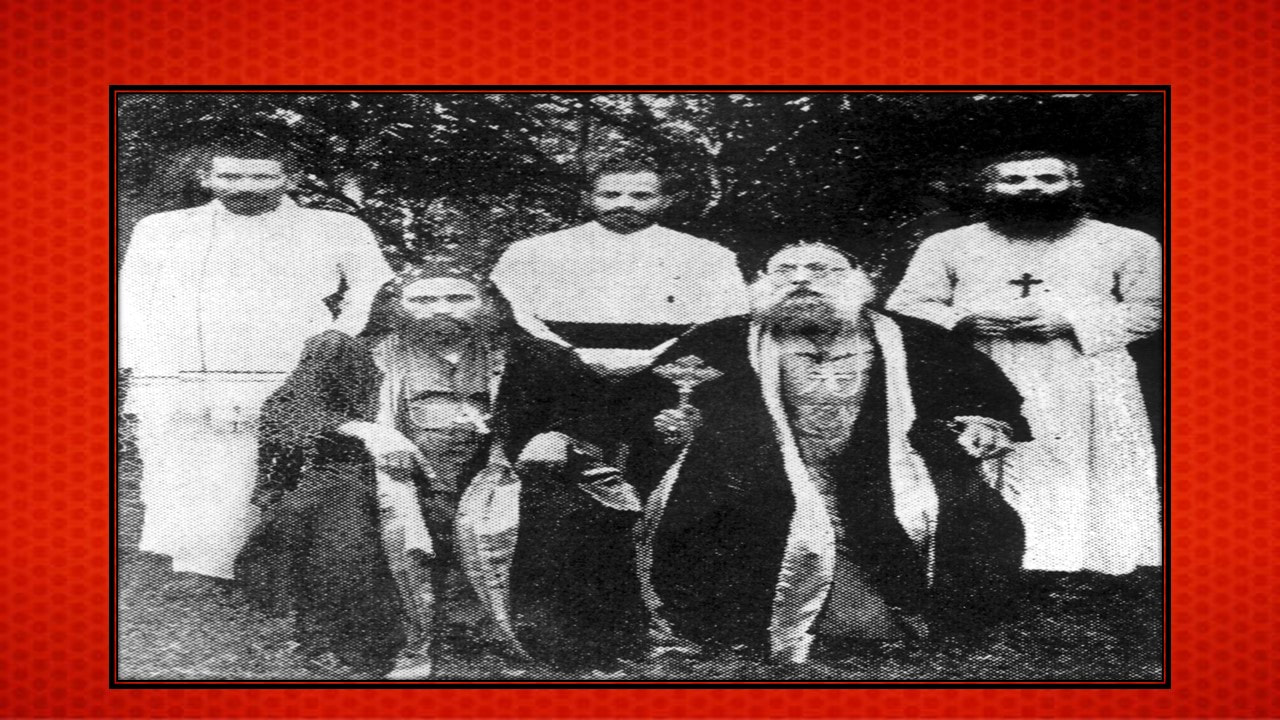
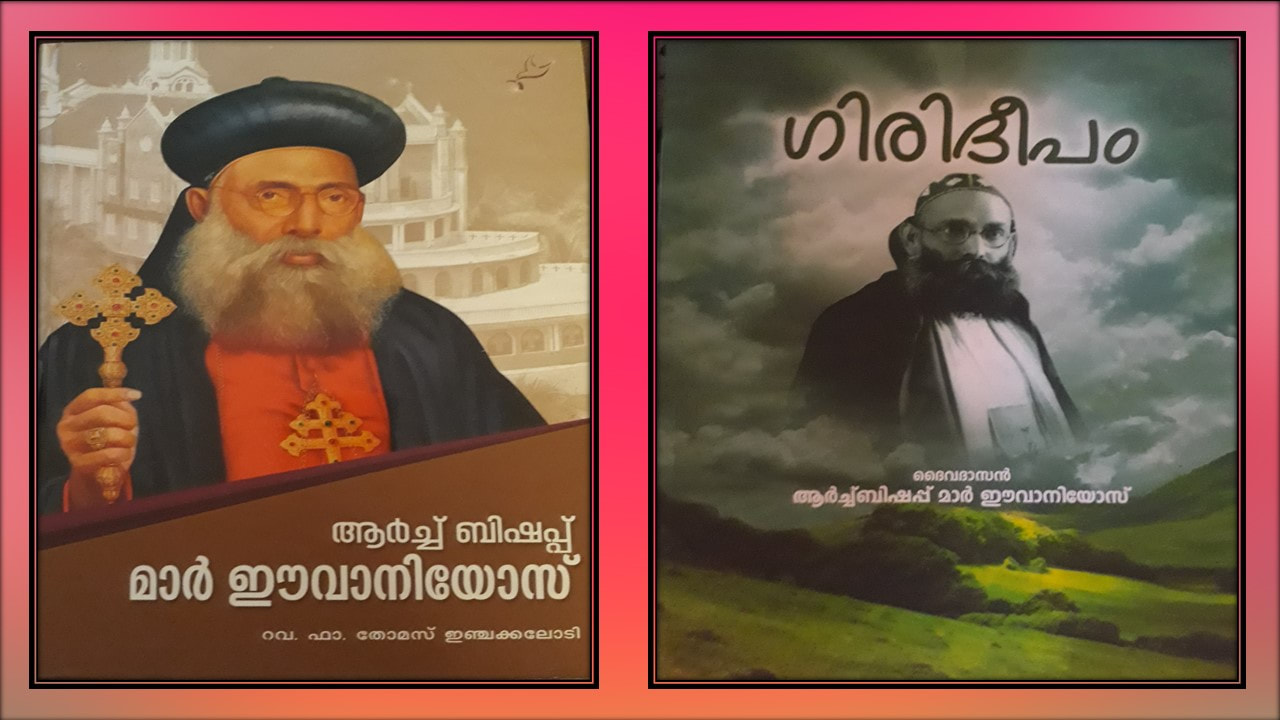
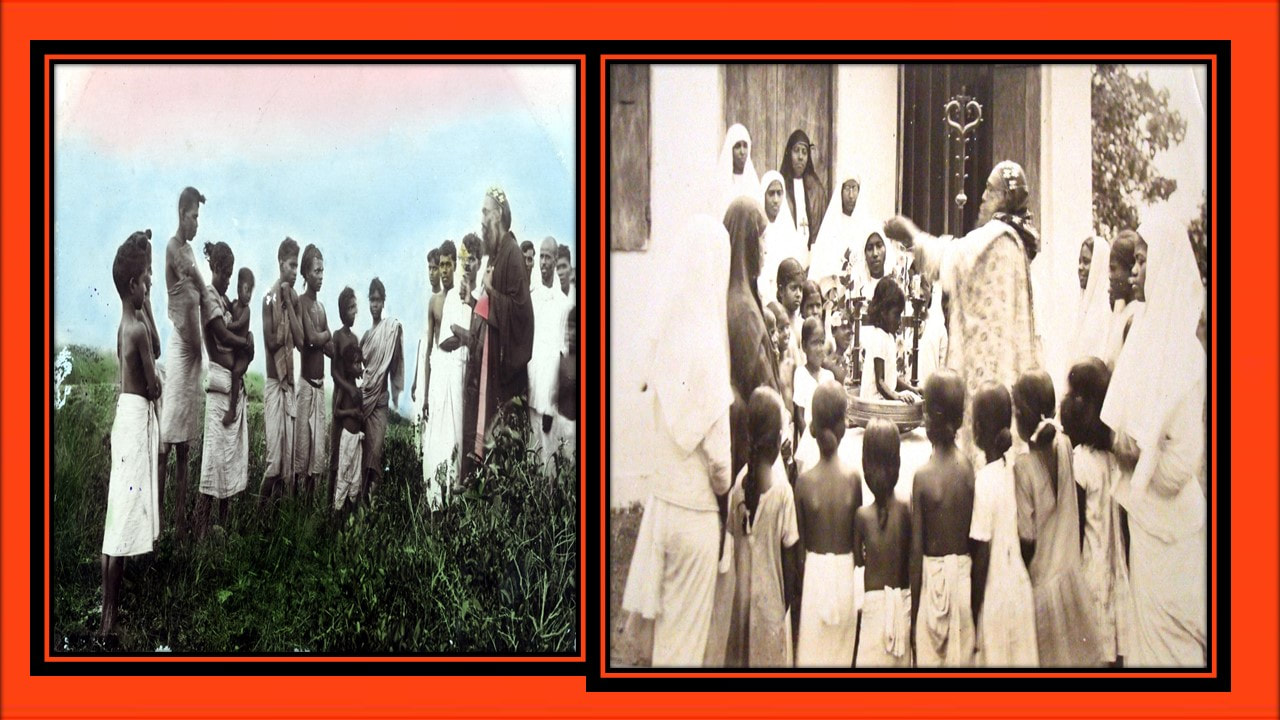
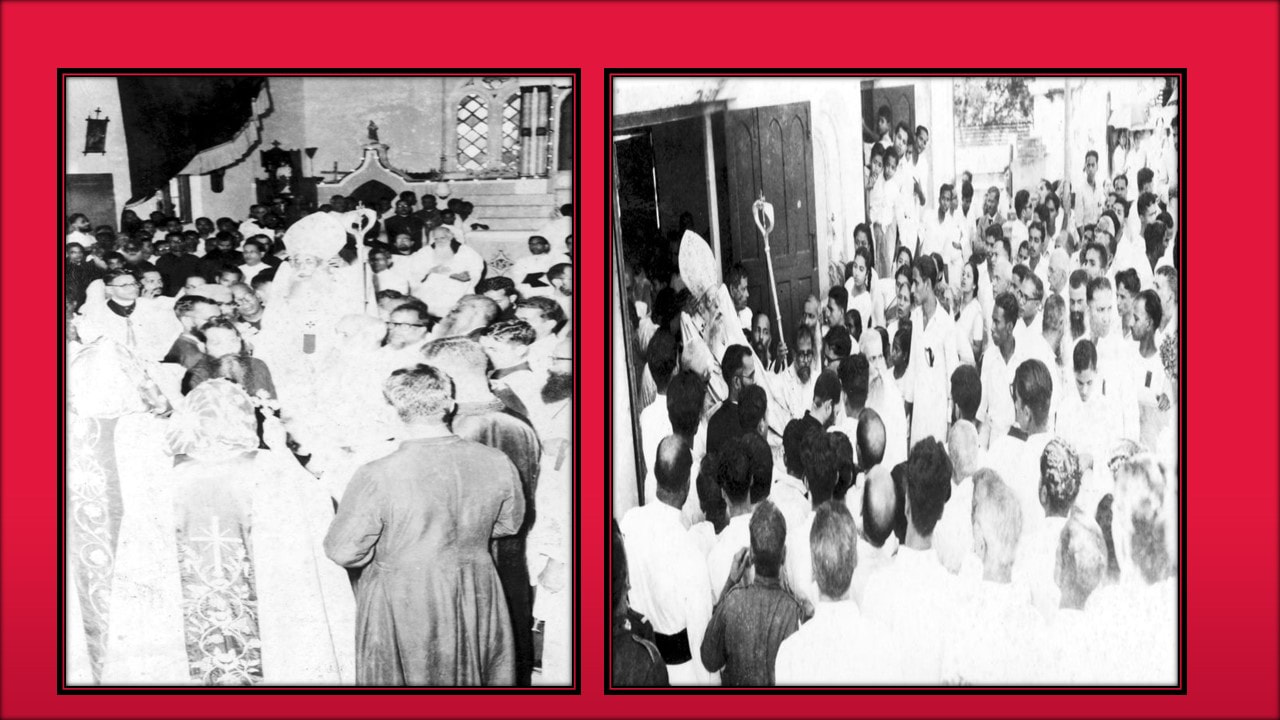

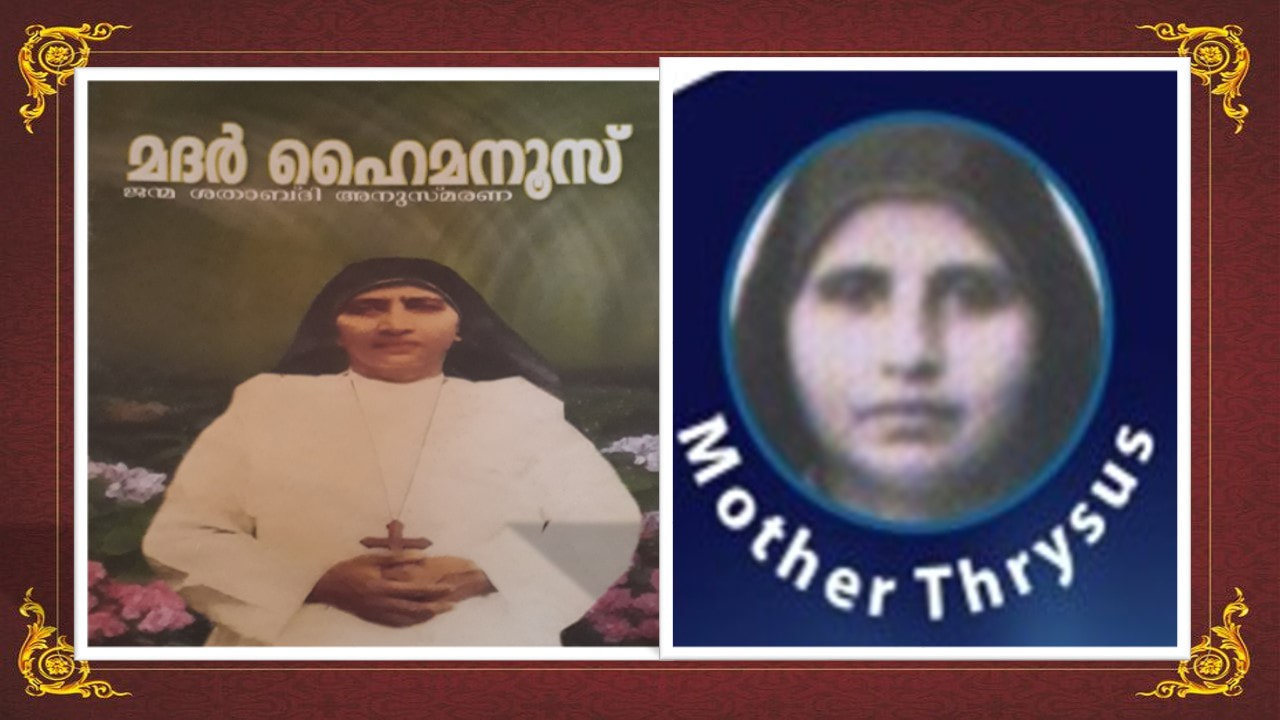

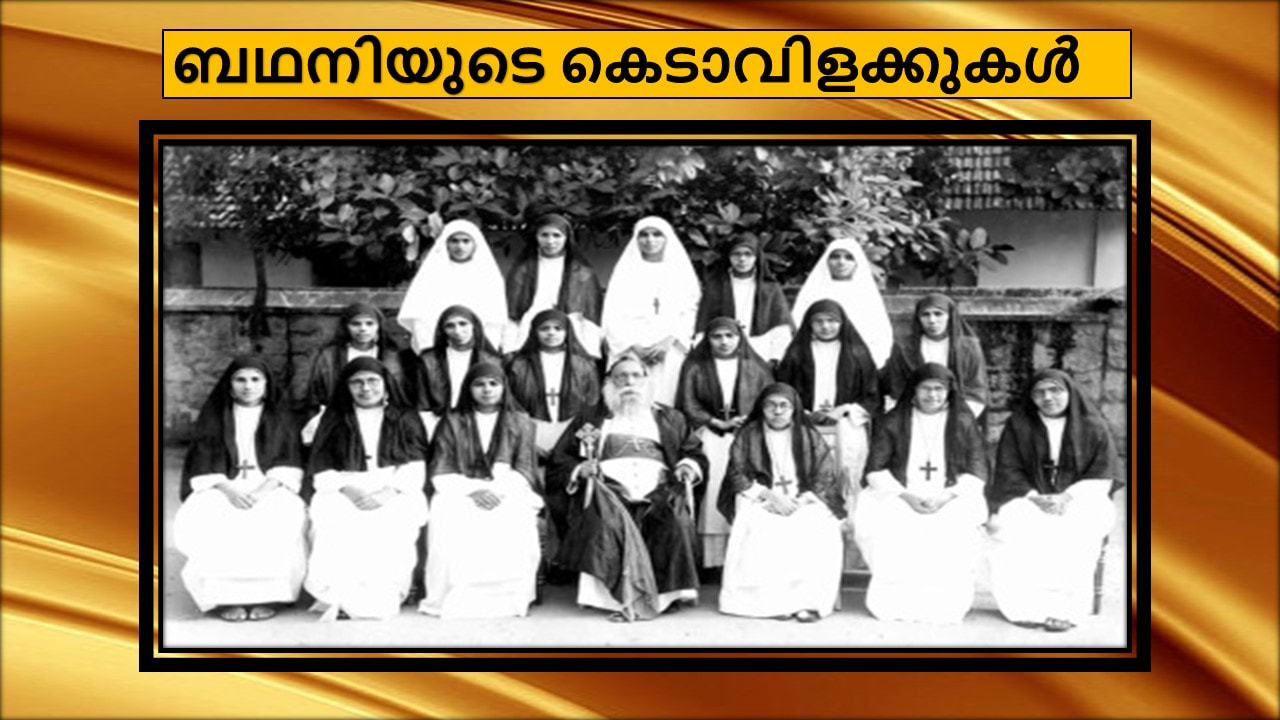
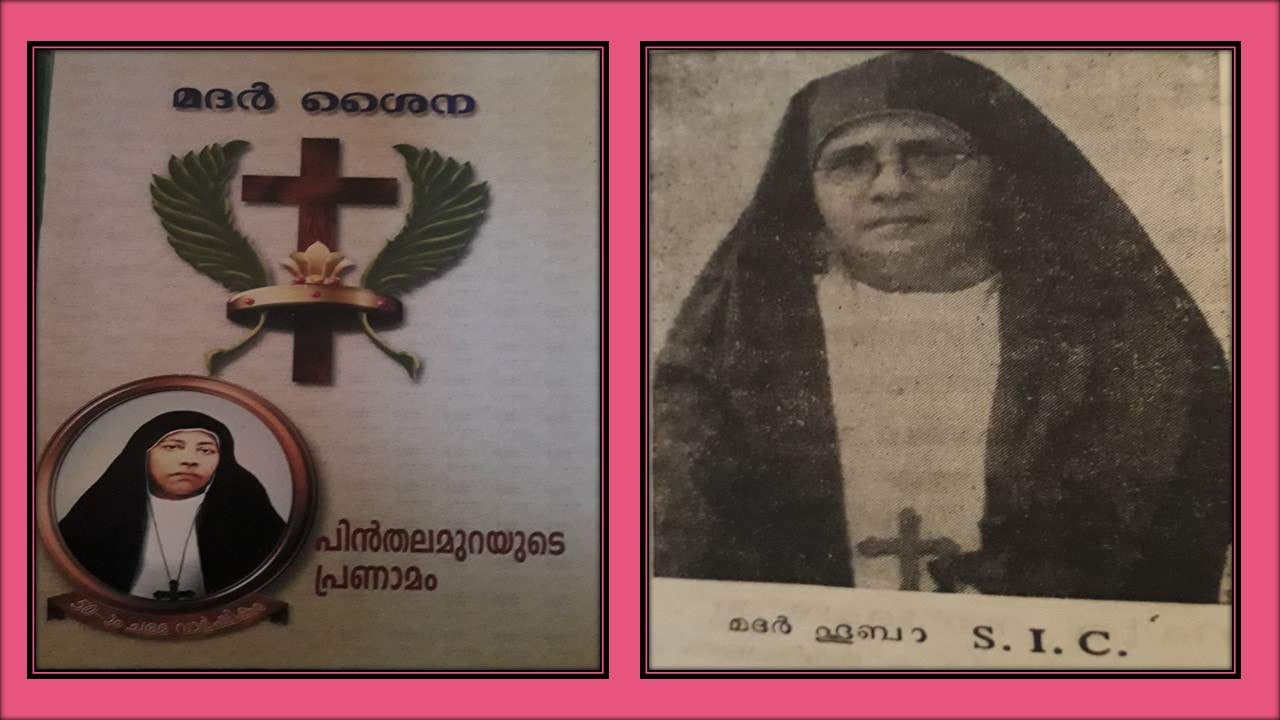


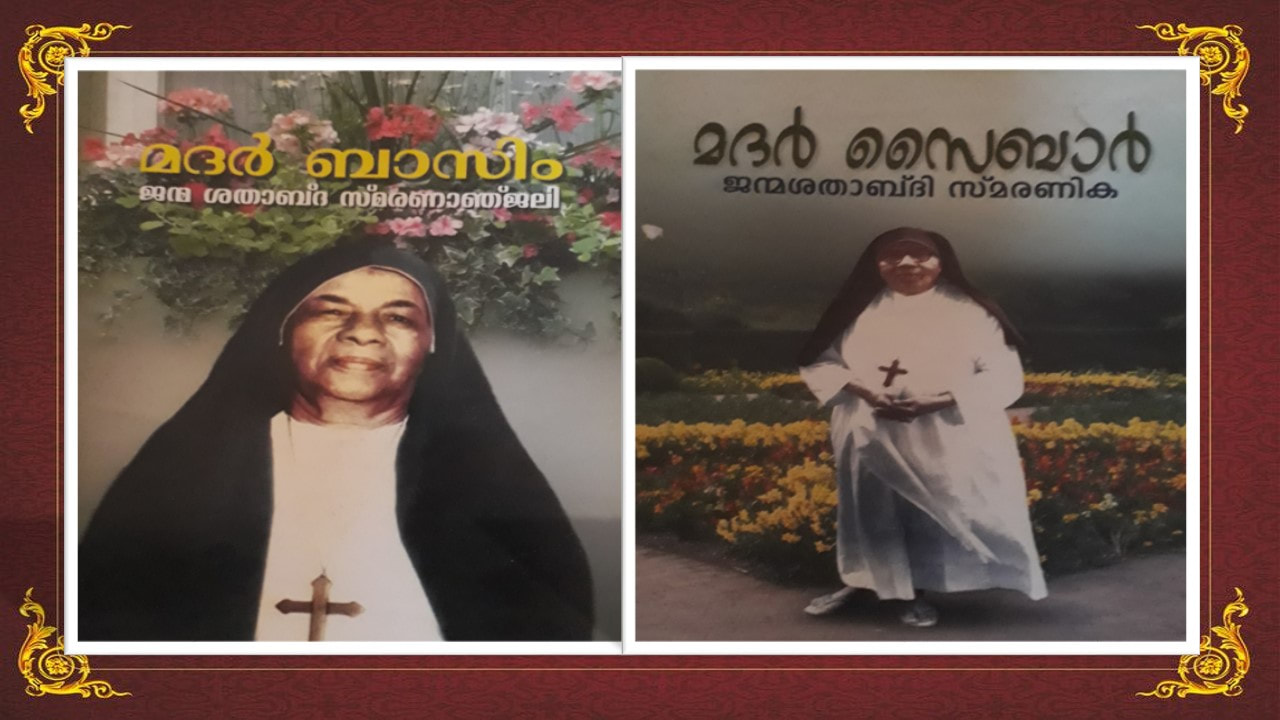
The Church “a people brought into unity in the unity of the Father, the Son and the Holy Spirit” is an extension of the mystery of incarnation of the Kingdom of God inaugurated by Jesus Christ on earth and brought about by the mission given to the Apostles (Mt.28: 18-20), for proclaiming and establishing among all people the Kingdom of God. The Apostles and their successors planted the Church of Christ in various place. India was blessed to an Apostolic Foundation of the Church, through the evangelization mission of St. Thomas, one among the twelve Apostles of Jesus Christ. According to tradition, St. Thomas came to India in 52 AD first landed at Maliankara (Kodungallur) and started his mission in Malankara also known as Malabar, the southern tip of the Indian peninsula. Because of this Apostolic Tradition, the Church was then known as the Church of St. Thomas and the ecclesial community that originated from this Apostolic Tradition was known as the St. Thomas Christians. The Church of St. Thomas in India got rooted in the socio-cultural milieu of India and developed her own ecclesial, liturgical, spiritual and administrative traditions. This was in communion with the Universal Church through their ecclesial communion with the Churches of the Middle East. Thus this Church came into contact with the Syro-Chaldean Church of the Middle East and consequently adopted the East Syrian Liturgy.
In the 16 th Century, this Church came into direct relationship with the Western Church through the Portuguese missionaries. The Portuguese extended the Padroado agreement in their evangelization programme over India and wanted to bring the Indian Church of St. Thomas under this jurisdiction. The Church in India which was rooted in the socio-cultural environment and which enjoyed autonomy in internal administration in communion with the Universal Church resisted the unwanted intervention of the Portuguese who brought with them the Western Ecclesiastical traditions. Ignorant of the Oriental traditions of the Indian Church, they wanted to Latinise the Syrian Christians of India. In due course of time there arose litigations, divisions and disunity in the Church. It was also a period of spiritual renewal too. In 1925 the litigations in the Church and its effects reached its zenith. Fr. P.T. Geevarghese who loved the Church more than his life was moved by the spirit of God. He realized that only a spiritual awakening of the Church would give a lasting solution to the problems of the Church. He himself took to Sanyasa(Religious Life)and founded the Order of the Imitation of Christ also called as Bethany Ashram in the year 1919. Eventually Fr. P.T Geevarghese came to an understanding that “convents are inevitable for the spiritual growth of the community and for its educational advancement. In his autobiography we read: “it is an established fact that women are more talented and efficient than men in the service of the sick. Even in the field of women education, women could produce much greater results than men. He says; “how great is the prosperity, they could achieve for the community, spiritually and socially, if such women had dedicated their virginity for love of God throughout their lives”(Girideepam, pp.63; 124). He believed that it would be most beneficial to the Malankara Church to have nuns who dedicated their lives to God. It was on this well founded spiritual vision and on the consequent spiritual fervor that Father Geevarghese founded the religious community namely, the Sisters of the Imitation of Christ. In the foundation of Bethany Madhom Fr. P.T. Geevarghese was supported by the Oxford Sisters of Epiphany at Barisol who from 1915 to 1925 by taking care of more than 13 Syrian girls providing them higher education and religious formation in their mother house at Barisol and then at Thirumoolapuram, Thiruvalla. We acknowledge the service of Mother Edith the foundress of this congregation and Sr. Helen with high esteem.
Mar Ivanios was very much impressed by the dedicated life of the Oxford Mission Sisters. He requested Mother Edith to come to Kerala and start a convent for the Syrian girls in the Malankara Church. ‘Sanyasam’ the idea of a dedicated life for women was unknown to them till then, in the Malankara Jacobite Church. Mother expressed her inability to come to a far off place in Kerala and start a religious house. However, she was taken up by the idea of Fr. Gevarghese and proposed to give religious training to the Syrian girls if they are sent to the Mother House at Barisol near Culcutta. With the permission and blessings of Mar Divannasios Vattasseril, the Metropolitan of the Malankara Church, Father Geevarghese took a few girls who were the daughters and relatives of his friends who belonged to the noble Syrian Jacobite families to Barisol. Leaving their country in the South West corner of India they followed Father Geevarghese Panicker to the Mother House of the Oxford Mission Sisters of Epiphany in the North East part of India. In 1915, 1917 and 1918 three batches of students reached Culcutta, two for higher studies in the diocesan college and eleven students for religious training in the Mother house at Barisol. The structure of buildings and the simplicity of the religious house at Calcutta resembled that of the Viswabharati of Tagore. The standard of life of the Epiphany Sisters was very simple and they lived according to the Indian way of life and culture. M.A achan liked the life style of the sisters who spent their life for the poor people of Bengal. He was very confident that the Oxford Mission Sisters would give good training to the candidates of the Malankara Church to become good religious.
Mother Edith of a noble birth and upbringing was highly talented, magnanimous and one of the first lady graduates from the university of Oxford. Mother Edith entrusted the ‘Syrian girls’ to Sister Helen one of her best co-religious. In 1918 four members of the sisterhood had been received by the founder as postulants at Barisol in Bengal. Sister Helen had taken care of the Syrian Community for eleven years and Mother Edith’s role in moulding the first members of the ‘Bethany Sisters’ was really significant. The founder visited them occasionally and he had great concern in their spiritual progress.
The convent at Barisol was efficiently run under the supervision and protection of Mother Edith, a great personality she had very well understood with what intention, our girls were admitted there. She had further grasped that they were to be instruments to uplift the community which was in a state of deterioration. Hence it was a fact that she had given special attention with regard to Syrian Girls entrusted to her by Father Geevarghese. While the formation of the sisters was underway Fr. P.T Geevarghese thought of renovating the girl’s school at Thirumoolapuram. He asked Mother Edith to help him in providing good teachers who are able to conduct this school at Thirumoolapuram. According to the invitation of Mother Edith Miss Brooks Smith, a qualified graduate and Miss Homes, a retired professor who was a companion of Mother Edith from Oxford reached Barisol. They were very happy with the Syrian girls who knew English and Malayalam. The English ladies were unwilling to come to the Southern part of Kerala, which is far away from Culcutta. They insisted that they would not go to Thirumoolapuram unless if these girls would accompany them to the new place. M.A achan and Mother Edith had to face a difficult situation in order to avail such qualified teachers. He had to take a great decision about the trainees under Mother Edith’s supervision and care. It was not so easy to find out teachers of such caliber for his school, hence he decided to bring back the trainees to Thirumoolapuram “We are immensely indebted to Mother Edith for rendering us valuable recommendation in this matter. Without her special support Balikamadhom High School at Thirumoolapuram would never have had Miss Homes and Miss Brook smith on the role of it’s staff” (Girideepam 125). Since there was no other way M.A achan was forced to call back the trainees to Thirumoolapuram.
Mother Edith was so generous to send Sister Helen the mistress also to Thirumoolapuram along with the trainees to continue their religious formation. A plot of land adjacent to the western side of the school was bought and constructed a building for the convent. The long period of preparation had two periods of 5 years each. The first period was in Barisol, Bengal, from 1915 - 1920 and for the second period of five years they were at Thirumoolapuram, Kerala, from 1920 – 1925. Thus the training period continued under the leadership of the mistress Sister Helen till 1925.
Till then Sanyasa (Religious life) for women was not a tradition in the Jacobite Church. Even the Malankara Metropolitan Mar Divannasios who allowed the girls to go to Calcutta was not in favor of Sanyasam for women. M.A achan and those who were longing for the profession of the trainees were very anxious about this. In the Eastern Churches only a Bishop could receive the profession. Father P.T Geevarghese pleaded the Metropolitan again but he did not allow it. The Epiphany Sisters also were waiting for the profession. The founder had great faith in the merits of Mother Edith. Being a great Greek scholar, Mother Edith translated the teaching of St. Basil the Great on religious life and wrote a guide too on the religious life for the use of the new community. It was again Mother Edith who designed the religious habit of the Bethany Sisters on the occasion of their first profession in 1925.
When the foundation of the monastic institutions have taken their initial shape, the choice of a name and place became necessary. The thought of the monastic foundations pre-occupied the Founder and it was the chief subject of his prayers too. Thinking over a suitable name, he opened the Biblical dictionary and the first word he saw “Bethany” which to him seemed the most appropriate name for his religious institutes. One of his friends, a rich man in Kerala donated him hundred acres of virgin forest called the “Dwarf Mountains” of Kerala at Perunadu, where Father Geevarghese founded his first Monastery. He thought to build the convent also for the religious sisters on this mountain but by divine providence the convent was started at Thirumoolapuram, Thiruvalla in 1925.
Father P.T Geevarghese was consecrated as Bishop on May 1st 1925. Soon after the Episcopal Consecration as the Bishop of Bethany, the new Bishop Mar Ivanios received the profession of the first three sisters of the Imitation of Christ on 21st Sept 1925, on the feast of the Nativity of Our Lady. True to the Eastern concept of profession it was a complete dedication of life, a jubilant giving of oneself as a holocaust. At first the sisters took perpetual vows, simple or solemn. Thus the following sisters made their profession in the Jacobite Church in the following names:-
Sosamma – Mookencheril – Thripunithra – Sister Shina (Peace)
Achiamma – Ponvanibhom – Kayamkulam – Sister Huba (Love)
Saramma – Koodathummury – Vennikulam – Sister Denaha (Epiphany)
Thus the first women congregation was founded by Mar Ivanios in the Malankara Church on 21st Sept 1925 according to the Julian calendar. Thus the great event of Profession ceremony was conducted in the Malankara Church and the three sisters received the religious habit from Mar Ivanios.
The historic re-union of Mar Ivanios with the Catholic Church was on 20th September 1930. On September 22nd all the ten members of the congregation, together with the founder, re-united with the Catholic Church. When the founder Mar Ivanios became Archbishop of Trivandrum, the house in Thiruvalla was closed down according to the decision of Mar Ivanios and the members, all the sisters went over to Trivandrum where the Mother house was erected in 1936. A couple of months later 3 sisters were sent back to Thiruvalla to help Mar Theophilos, bishop of Thiruvalla, in his diocese. Thus a separate community was formed there. These separate communities continued to grow independent of each other and established houses, schools and orphanages of their own until their reunification in 1956.
The congregation was elevated to the Pontifical Status on August 6, 1956 by Pope Pius XII. The decree of praise and approbation of the congregation were both given on the same after having united the two branches of the congregation as two provinces of the same institute under one Mother General. Very Rev. Fr. Placid C.M.I was sent as a special visitor from Rome. He executed the decree of the Holy See on 21st August 1956. The constitution was temporarily approved on 17th May 1959.
The Bethany Sisters try to attain their personal sanctification by imitating our Lord Jesus Christ in His hidden life of contemplation and in His active life. The charism of the congregation:- The spiritual renewal of the Syro Malankara Catholic Church, Re-Union, Evangelization and the upliftment of women through imitation of Christ. Since the re-union the congregation has grown rapidly. There are five provinces namely Trivandrum, Thiruvalla, Bathery, Pathanamthitta and Muvattupuzha under one Mother General. Our Missionary activities extend to India, Germany, America, Italy, Switzerland, Israel, Ethiopia and South Africa.





























